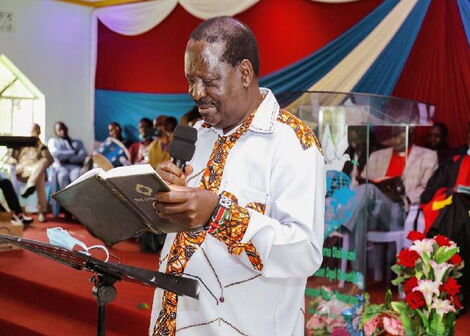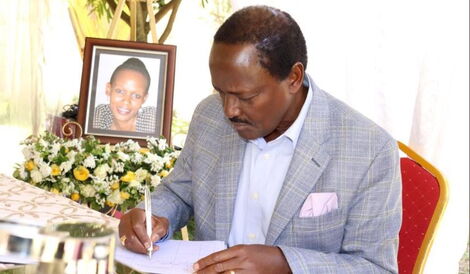-
Former Prime Minister Raila Odinga speaking to Wiper leader Kalonzo Musyoka at a past event. FILE
-
Former Vice President, Stephen Kalonzo Musyoka, played an important role in boosting the numbers of former Prime Minister, Raila Odinga, in the August 9 presidential vote.
According to Forms 34B uploaded on the Independent Electoral and Boundaries Commission (IEBC) portal, Kalonzo's three counties of Ukambani delivered a total of 769,422 votes to the former Prime Minister's basket.
The data, which represents 75 per cent of the total votes cast in the region, was derived from 22 Form 34Bs representing all the 22 constituencies in the three Ukambani counties - Makueni, Kitui and Machakos.
Raila defeated his main competitor, Deputy President William Ruto, with a wide margin. The latter garnered a total of 242,187 votes in the three counties.
Wiper Leader Kalonzo Musyoka signs the condolence book during the burial of Johnson Muthama's daughter on Monday, May 2, 2022.FILEAccording to the data, the former Prime Minister got the most votes from Machakos county which contributed a total of 304,830 votes. This is despite Raila and Kalonzo's fallout with the county's governor, Alfred Mutua.
In Makueni, Raila got 229,187 votes while in Kitui, he received 235,408 votes.
Constituency-wise, the former Prime Minister gained the most from Mbooni Constituency in Machakos County (50,649) followed by Machakos Town (50,114) and Makueni Constituency (48,774).
Out of the 1,699,724 registered voters in the three counties, 1,030,292 individuals turned up to vote representing a 60 per cent turnout. 8,924 votes were, however, spoilt.
Kalonzo and Raila entered into an agreement in June 2022 with the Azimio leader promising the former Vice President a Chief Cabinet Secretary slot as well as several Cabinet slots.
In return, the former Vice President agreed to drop his presidential bid and support Raila.
Initially, Kalonzo had opted out of the Azimio coalition after protesting for being snubbed as Raila's most preferred running mate.
The official presidential results are yet to be announced by the IEBC.
 File photo of Former Prime Minister Raila Odinga reading a Bible in Church. FILE By Derrick Okubasu, Kenyans.co.ke
File photo of Former Prime Minister Raila Odinga reading a Bible in Church. FILE By Derrick Okubasu, Kenyans.co.ke







